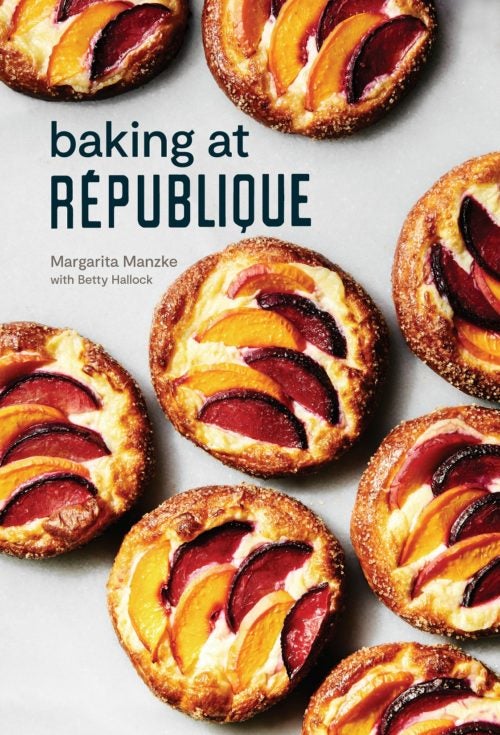Brioche Dough
2
kg (4 pounds)
Main
Course
Print Recipe
Ingredients
Directions
Ingredients
440 g
(2 cups) high-fat European-style butter

725 g
(5 3/4 cups plus rounded 1 tablespoon) all-purpose flour

150 g
(3/4 cup) granulated sugar

9
eggs

75 ml
(1/4 cup plus 1 tablespoon) whole milk

10 g
(2 teaspoons) fine sea salt

5 g
(2 teaspoons) instant yeast

The ingredients in brioche are straightforward: just eggs, milk, flour, salt, yeast, sugar, and butter. Brioche is truly easy to master, and once you do, you can make so much with the same dough. Make the brioche dough the day before shaping and baking because it rests overnight in the refrigerator. Once the dough is chilled, you can shape the dough and freeze it. Before baking, thaw the dough in the refrigerator overnight, shape, and then proof at room temperature (between 75° and 80°F) until doubled in size.
Directions
- Take the butter out of the refrigerator 30 minutes before you plan to use it so that it's pliable but still cool. Cut the butter into 1⁄2-inch cubes and set aside. Measure the flour and sugar separately and place in the refrigerator to chill for 30 minutes.
- In the bowl of a stand mixer fitted with the dough hook, combine the eggs and milk and mix on the lowest speed just to blend. Add the flour, salt, and yeast. Mix on the lowest speed for 2 minutes to incorporate the ingredients.
- Stop and scrape down the bowl. Increase the speed to high and mix for another 2 minutes.
- With the mixer still on high, rain in the granulated sugar slowly and evenly. Let the sugar become incorporated before adding more-this should take at least 5 minutes and up to 7 minutes. The dough will start to come off the hook at this point and get a little softer as the sugar is incorporated.
- Turn off the mixer. Add the butter all at once. Mix for 10 minutes on high speed to fully incorporate the butter. Stop and scrape down the bowl once or twice during the process. The dough will form a mass around the dough hook and pull away from the sides of the bowl with a slight thwacking sound. The dough is done when it is glossy and smooth and moist but not sticky.
- To confirm that the dough is properly mixed, perform the "windowpane" test: Take a small amount of dough, grasp it between your thumbs and forefingers, and carefully stretch it until it is thin and nearly transparent. It shouldn't break. If it does, return it to the mixer and mix for another 2 minutes and test again.
- Coat a large bowl or container with cooking spray. Place the dough in the bowl and roll it around to coat with the oil. Cover with plastic wrap. Let rise in a warm place (between 75° and 85°F) for 30 minutes.
- Lightly dust your work surface with flour, remove the dough from the bowl, and set it on the work surface. Gently fold the dough into rough thirds, as if you were folding a letter. Turn it 90 degrees and fold it the same way again. Return the dough to the bowl, cover, and let it rise for another 30 minutes until doubled in size.
- Transfer the dough to a large bowl coated with cooking spray. Place the dough in the bowl and roll it around to coat with the oil. Cover with a clean kitchen towel and set aside at room temperature. Transfer the bowl to the refrigerator to chill for 12 hours. After chilling, your brioche dough will be ready to use for recipes that call for it.
Reprinted with permission from Baking at Republique by Margarita Manzke, copyright (c) 2019. Published by Lorena Jones Books, a division of Penguin Random House, Inc.

